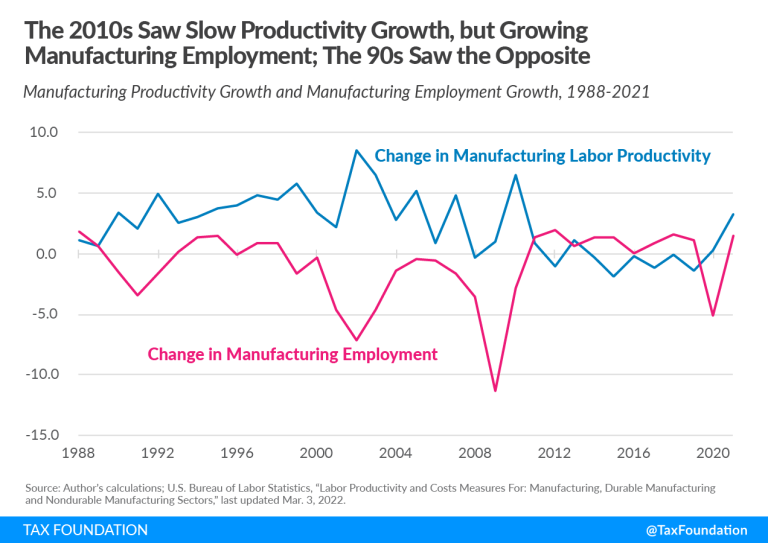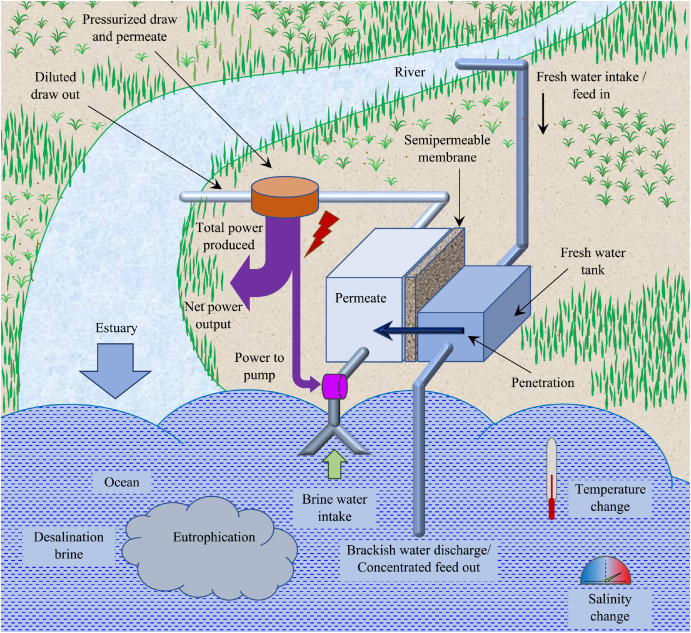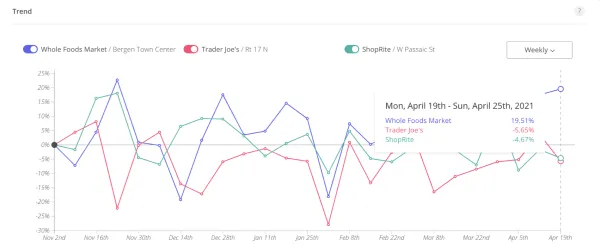Rising Tariffs Trade Policies Reshape the Chemical Sector Growth Landscape
Opinion: Unraveling the Chemicals Industry Amid Tariff Turbulence and Trade Policy Twists
The global chemicals industry is currently facing a period filled with tricky parts and tangled issues that are reshaping the way players approach production and investment. As we take a closer look at recent forecasts and reports by industry experts such as Atradius and the American Chemistry Council (ACC), one thing emerges clearly: while the near term may seem intimidating due to tariff pressures and trade policy uncertainty, there are promising signals that hint at a recovery in the coming years.
This editorial aims to take a closer look into the global chemicals sector’s current state, the influence of US tariffs on production, and the various factors that will help shape the industry’s future outlook. We will also highlight key perspectives on US domestic production, emerging trends across Europe, China, and other major markets, and share a personal view on the often nerve-racking yet fascinating evolution of this sector. By using clear subtopics and organized details, we hope to help you find your way through this complex industry landscape.
Understanding the Impact of US Tariffs on Chemicals Production
The chemicals industry’s production performance in the US has been influenced by a mix of external pressures and internal adjustments. A recent Atradius report forecasts that domestic production growth is expected to dip to 0.6% in 2025 before contracting further by 0.8% in 2026. A key driver behind these numbers is the US tariff structure, which has significantly increased manufacturing costs and hampered domestic demand.
Tariffs and Their Ripple Effects
US tariffs are not just another cost line on the balance sheet; their impact ripples throughout the supply chain. The automotive and construction sectors, among others, have experienced a slowdown in domestic demand due to the additional costs imposed by tariffs and ongoing trade policy uncertainty. Many manufacturers are delaying projects, waiting for clearer guidelines before making substantial investments in new capacities.
This delay has created a challenging environment for the chemicals manufacturers, where making quick decisions in a high-tariff setting has become akin to trying to work through a maze of confusing bits. Key observations include:
- Delayed projects: Manufacturers are postponing investments until a predictable tariff environment is restored.
- Reduced domestic orders: With two key buyer sectors – automotive and construction – facing increased financial pressure, overall order volumes have seen a noticeable dip.
- Increased production costs: Even as production levels adjust, companies brace for a bump in production costs as they adapt to the new tariff realities.
Implications for US Manufacturers
The slowdown may seem off-putting, but there is an upside too. Atradius forecasts indicate that by 2027, US chemicals production is expected to rebound robustly at 4.2%, with growth rates staying above 3% through 2028 and 2029. This mid-term forecast is buoyed by several factors:
- Shale gas projects: The benefits of shale gas continue to bolster US production capabilities, offering a cost-effective alternative to conventional energy sources.
- Consumer demand recovery: As tariffs create an environment of caution in the short term, a strong rebound in consumer demand is anticipated as uncertainties clear.
- Improved fiscal policy: According to Atradius, the positive outlook is partly due to anticipated fiscal policy adjustments by the administration, which should help stimulate manufacturing demand.
While these projections carry an air of cautious optimism, companies across the industry remain loaded with issues related to tariff uncertainties. The need to maneuver around these obstacles forces manufacturers to continually assess and figure a path through the economic landscape, seeking both risk mitigation and opportunity exploration.
Global Forecast: A Patchwork of Opportunities and Challenges
Looking beyond the US, the global chemicals market is also adjusting to a mix of market forces, trade wars, and shifting export demands. Atradius’ global forecasts illustrate a more nuanced picture where regions across the globe face their own set of challenges and opportunities.
China’s Evolving Chemicals Landscape
In China, after substantial increases observed in 2023 and 2024, growth is expected to decelerate to 5.5% in 2025, inching up only 1.3% in 2026. The country’s chemicals industry is contending with several headwinds:
- High US tariffs: Currently, Chinese goods face an effective tariff rate of around 40% in the US, which has significantly dampened export volumes.
- Sluggish construction sectors: A prolonged period of low construction volumes, partly due to an oversupply in the housing market, means reduced chemical demand domestically and abroad.
- Market diversification: However, China is mitigating these problems by redirecting exports towards Africa, Asia, and the EU, which signals a calculated shift in market strategy.
When reflecting on China’s production outlook, it is interesting to note that even though a drop in exports to the US appears daunting, the nation is actively hunting for opportunities in new territories. This dynamic shift demonstrates the country’s ability to figure a path through economic headwinds by approaching challenges as an opportunity rather than an obstacle.
European Chemical Production and Energy Considerations
In Europe, especially in the European Union, chemical production is expected to level off in 2025 and 2026. European manufacturers face a particularly nerve-racking set of challenges related to escalating energy costs that chip away at their competitive edge against American and Asian rivals.
Key considerations for Europe include:
- Energy costs: High energy prices are a persistent hurdle for European manufacturers, affecting production margins and limiting capacity expansion.
- Tariff spillover: US tariffs aimed at Chinese goods could unintentionally push more foreign exports into Europe, further intensifying competition for local producers.
- Market saturation: The EU market faces issues related to saturation in certain segments, which could stymie growth if not addressed with innovative product and production strategies.
These factors combine to create a setting that is tense and full of problems for European chemical producers. The industry must now find your way around these challenges by exploring new energy-efficient technologies and forging partnerships that can lower operational costs over the long term.
Rebound Prospects in Japan and India
Japan and India present contrasting yet intriguing scenarios. Japan’s chemicals output is forecast to face a contraction of roughly 0.9% in 2025, followed by a modest rebound of 0.8% in 2026. For Japan, the challenge lies in managing subdued domestic demand stemming from both economic pressures and a highly competitive export environment.
Conversely, India appears poised for a more vibrant upswing. Experts forecast that after a plateau in 2025, Indian chemicals production could surge by as much as 9% in 2026, largely driven by a robust domestic market. India’s outlook illustrates several fine points:
- Domestic demand growth: Increased investments in local infrastructure and a growing industrial base are key to propelling India’s chemicals market forward.
- Competitive labor costs: Lower labor costs compared to Western nations give India a competitive edge, helping to offset the impact of higher raw material expenses.
- Market liberalization: Economic reforms and a push toward importing advanced technology are expected to further modernize the industry and boost production capabilities.
These dynamics highlight the subtle details that differentiate emerging markets from mature ones, and underscore the varied global responses to common pressures such as tariffs and trade neutralities.
Key Industry Reports and Their Influence on Market Sentiment
Recent industry surveys and reports have provided essential insights into how manufacturers are coping with the twists and turns in both production output and market demand. The American Chemistry Council’s (ACC’s) Q3 survey presents a mixed bag of short-term contraction coupled with a more positive six-month outlook. It is an intriguing juxtaposition that warrants a closer look.
ACC’s Q3 Economic Sentiment Survey
The ACC survey found that overall activity levels—including output, production, and sales—were negative in Q3. More than half of the reporting companies reported declines in major customer market demand. Notably, shipping new orders dropped due to lower domestic and foreign engagements. The survey also reported a reduction in inventories as companies accelerated destocking measures.
Key insights from the ACC survey include:
| Observation | Implication |
|---|---|
| Negative Q3 activity levels | Indicates a significant slowdown in overall production |
| Decline in new orders | Reflects cautious market behavior influenced by tariff uncertainty |
| Inventory reduction | Accelerated destocking signifies reactive supply chain adjustments |
While these findings may seem off-putting at first glance, the ACC survey also reveals a cautiously optimistic view regarding recovery over the next six months. Companies are expecting:
- The gradual resumption of new orders
- Increased production levels
- Higher capacity utilization as the market stabilizes
This blend of short-term contraction and mid-term improvement illustrates the nervy balancing act that manufacturers find themselves engaged in. Despite the nerve-racking challenges presented by tariff policies and global trade uncertainties, there is an undercurrent of optimism in the industry circles.
Institute for Supply Management’s (ISM) Purchasing Managers’ Index
Additionally, data from the ISM Purchasing Managers’ Index for the US manufacturing sector reinforces the notion that there are hidden complexities within the manufacturing landscape. A decline of 0.4 points to 48.7 in October highlights that manufacturing activity is contracting at a faster pace than the previous month. Concerns over tariff uncertainty were notably cited by several respondents, emphasizing just how tangled the issues remain.
Despite the drop, these reports function as a reminder that fluctuations are part and parcel of the industry’s cycle. The key for companies lies in finding your way through these challenges and steering through this period of unpredictable tariff climates until a more stable environment is achieved.
Strategies for Businesses to Weather the Current Storm
In light of the challenging environment underscored by tariff impacts, trade policy uncertainty, and global production headwinds, businesses within the chemicals sector and related industries must adopt strategic moves to sustain momentum and even capitalize on these shifting market dynamics.
Embracing Technological Innovation
For manufacturers and suppliers in the chemicals industry, one of the super important strategies is to invest in technological innovation. Advanced process control, automation, and digital monitoring tools can help reduce production costs and enhance operational efficiency. Here are some key reasons why this strategy is essential:
- Increased productivity: Automation helps streamline processes, cutting down on waste and improving overall productivity.
- Enhanced quality control: Digital monitoring systems provide real-time data, allowing for quick adjustments and better quality assurance.
- Cost mitigation: Technological investments often result in lower long-term operational costs by optimizing resource usage.
By embracing advanced manufacturing technologies, companies not only cut through these tricky parts but also position themselves for robust competitive advantages in an increasingly challenging global environment.
Reassessing Supply Chains and Expanding Market Reach
Another effective approach for managing the current market challenges is to take a closer look at existing supply chains. Given the full of problems scenario triggered by tariff pressures, companies can benefit from retooling their logistics and supply chain strategies. This might include:
- Diversifying suppliers: Minimizing dependency on any single supplier or region can help mitigate the risk of supply disruptions.
- Exploring new markets: Shifting focus towards emerging markets in Africa, Asia, or even Latin America can offer fresh demand channels and offset fluctuations in traditional markets.
- Strategic partnerships: Forming alliances with logistics and technology partners can enhance supply chain flexibility, ensuring that unexpected changes in trade policy or tariffs are less disruptive.
These measures, though sometimes intimidating to implement initially, provide a more stable foundation for long-term growth. Companies must be prepared to get into the fine points of supply chain management to truly harness the benefits of a diversified approach.
Long-Term Industry Recovery: A Matter of Perspective
Despite the current market challenges, experts and industry insiders agree that the chemicals sector still possesses substantial opportunities for growth. Recent forecasts show that destabilizing factors affecting output today are likely temporary. With careful realignment and renewed investment in emerging technologies, the industry could well find its path towards a robust recovery in the coming years.
Mid-Term Forecasts and Economic Policy Shifts
Looking ahead to 2027 and beyond, industry analysts are optimistic about the rebound in production, particularly in the US. As fiscal policies adjust and consumer demand strengthens, the overall landscape is expected to improve. Key factors that support this view include:
- Market stabilization: As tariff uncertainties resolve, manufacturers should experience fewer nerve-racking delays in project execution.
- Fiscal policy support: Government initiatives directed at boosting domestic manufacturing and consumer confidence could sharply improve market conditions.
- Technological modernization: Investments in advanced production methods are anticipated to bolster efficiency, reducing both costs and environmental impacts.
In our view, the long-term resilience of the chemicals industry lies in its ability to adapt to evolving market conditions and regulatory shifts. Businesses that can swiftly adjust their strategies to incorporate new trends and policy changes are likely to emerge as industry leaders.
Sector-Specific Strategies for Recovery
Industry players can benefit enormously from developing specialized strategies that target their core challenges. For instance, companies operating in sectors most affected by tariffs, such as those supplying the automotive and construction industries, should consider approaches such as:
- Cost pass-through models: Adjusting pricing strategies to accommodate increased production costs without alienating customers.
- Enhanced customer communication: Keeping clients informed about the causes of price adjustments can build trust and reduce the potential for lost business.
- Innovation in product formulation: Research and development aimed at creating cost-effective alternatives might help circumvent the price pressures caused by tariffs.
Through these sector-specific strategies, companies can better manage the complicated pieces of their business operations while positioning themselves to benefit from any eventual easing of global trade tensions.
Market Sentiment and the Role of Economic Indicators
Industry sentiment is a fickle yet super important barometer of where business leaders expect to head next. Economic indicators like the ACC’s survey and the ISM Manufacturing PMI are critical tools that help stakeholders gauge the strength of manufacturing demand and adjust their tactics accordingly. In many ways, these indicators are like early warnings—helping businesses to figure a path through short-term shocks and prepare for long-term growth.
Interpreting Economic Data in a High-Volatility Environment
The recent downturn observed in the ISM Purchasing Managers’ Index provides key insights into the current state of the manufacturing sector. With an index reading below the neutral 50 mark, it is clear that many manufacturers are still feeling the pressure of tariff-driven cost increases and reduced order volumes. However, such data should be seen in context:
- Indicators reveal a snapshot of current conditions rather than the full long-term trajectory.
- Short-term contractions often lead to periods of adjustment that eventually pave the way for sustainable growth.
- Monitoring subtle details in these reports can help companies spot emerging opportunities and areas in need of immediate attention.
Ultimately, interpreting economic data well is much like getting into the nitty-gritty of any complicated situation: it requires looking at all the little twists and turns of the data to understand how today’s challenges may transform into tomorrow’s advantages.
The Role of Market Research in Business Strategy
Businesses that invest time in getting into detailed market research tend to unlock hidden opportunities within even the most turbulent environments. Detailed reports and surveys do more than just record numbers; they provide context and actionable insights that companies can rely on to inform their strategic decisions. Among the top strategies recommended by industry experts are:
- Regularly reviewing economic sentiment surveys and industry forecasts
- Integrating advanced analytics into strategic planning
- Engaging with policy makers and industry groups to stay ahead of regulatory changes
These measures, though at times nerve-racking to enact amid uncertainty, empower companies to make decisions that are grounded in robust data and market trends. As more companies take a proactive approach to research and data analysis, the entire sector should benefit from a clearer, more predictable environment.
Final Thoughts: Steering Through Uncertainty for a Brighter Future
While the current atmosphere in the global chemicals industry is filled with tricky parts and nerve-racking challenges—from tariff pressures and economic policy uncertainties to shifts in global demand—there remains a resilient spirit among manufacturers and suppliers alike. The industry’s ability to innovate, adjust production strategies, and reconfigure supply chains is a testament to its underlying strength.
In reflecting on the staggered global forecasts and the detailed insights from industry reports, one can see that even as the path ahead is interwoven with confusing bits and complicated pieces, there is a recipe for recovery. Manufacturers who are willing to get into the fine points of technological innovation, supply chain diversification, and proactive economic strategy will likely thrive as market conditions stabilize.
It is essential to remember that economic downturns, while intimidating, often set the stage for transformational change. The signal for recovery in the chemicals sector is evident not only in optimistic production forecasts for 2027 and beyond but also in the adaptive strategies being adopted by companies right now. Whether you represent a multinational chemical conglomerate or a small supplier forging new paths in a global market, staying informed and agile is critical.
Key Takeaways for Industry Stakeholders
As we sort through the tangled issues of today’s manufacturing landscape, here are some practical pointers for navigating the next few years:
- Monitor economic indicators: Regularly review reports from the ACC and ISM to keep abreast of changing market conditions.
- Innovate actively: Invest in cutting-edge production technologies that can help reduce costs and improve output quality.
- Diversify your customer base: Look for emerging markets and international partners to offset regional downturns.
- Engage with policymakers: Stay involved in discussions about trade and fiscal policies to ensure that your business interests are well-represented.
This approach not only allows companies to figure a path through current tariff and policy challenges but also sets the stage for leveraging emerging opportunities as conditions improve.
A Call for Collaborative Strategy in Uncertain Times
History has shown that sectors under pressure often produce some of the most innovative business models. In the current scenario, collaboration among businesses, government bodies, and technology providers could be the key to untangling the complicated pieces of the current economic puzzle. Solutions may include joint research initiatives, shared technological investments, and coordinated responses to unpredictable trade policies.
Ultimately, each stakeholder must play a role in ensuring that the industry not only survives these challenging times but emerges even stronger. By collaborating and sharing insights, companies can steer through these nerve-racking circumstances more effectively and build a more robust framework for future success.
Conclusion: Looking Ahead with Optimism and Strategic Clarity
In conclusion, while the chemicals industry is currently wrestling with tariff uncertainties, heightened global trade tensions, and elevated production costs, the mid-term forecast remains promising. Business leaders across the sector are working through these tricky parts with innovative strategies aimed at reducing cost pressures and optimizing supply chains. The path is certainly not free of confusing bits or nerve-racking challenges, but it is also full of potential and transformative opportunities.
As we look to the future, it is clear that recovery and revitalization in the chemicals sector depend largely on proactive, strategic decision-making and a willingness to embrace technological solutions. The positive forecasts for 2027 and beyond serve as a reminder that temporary setbacks often give way to robust growth when industries, and the dedicated people behind them, come together to innovate and adapt.
For those navigating this challenging landscape, now is the time to reflect on the lessons of the past, implement key strategic adjustments, and work collaboratively to create a more predictable and prosperous economic future. Whether you are a small business owner, a corporate leader in the automotive, industrial manufacturing, or related sectors, staying agile and informed will be crucial as you make your way through these fine points and subtle details of an ever-evolving market.
The road ahead will undoubtedly be filled with twists and turns, but with the right blend of innovation, collaboration, and carefully examined market insights, the chemicals industry and its allied sectors can forge a future that is not only more secure but also brimming with new opportunities for sustainable growth. This, in our opinion, is the moment to take the wheel and steer confidently toward a brighter tomorrow.
Originally Post From https://www.powderbulksolids.com/industry-trends/reports-chemicals-sector-growth-slowed-by-tariffs-trade-policies
Read more about this topic at
2026 Chemical Industry Outlook
Looking for Stability Amid An Uncertain Economic Landscape





